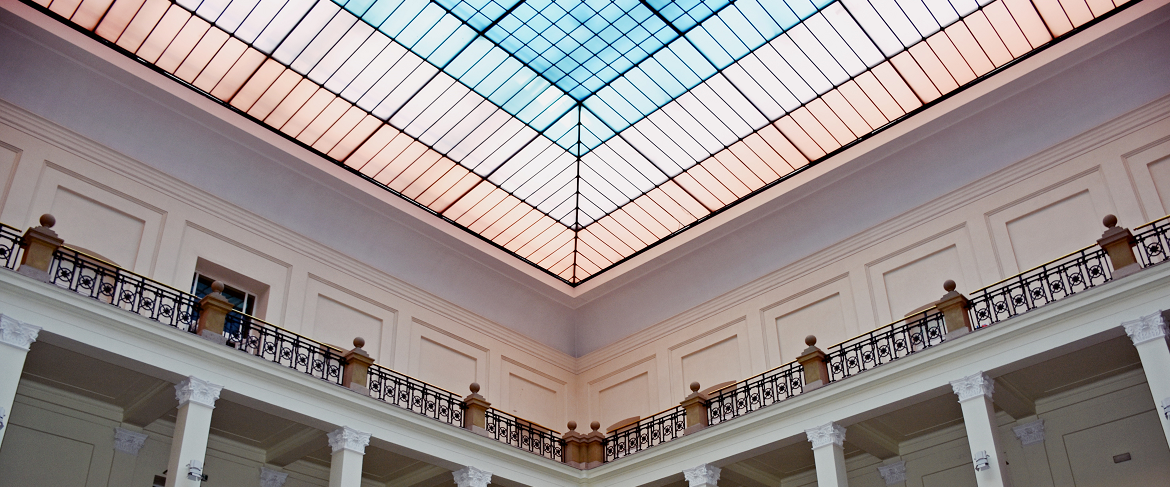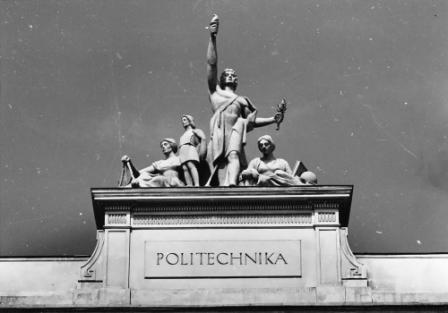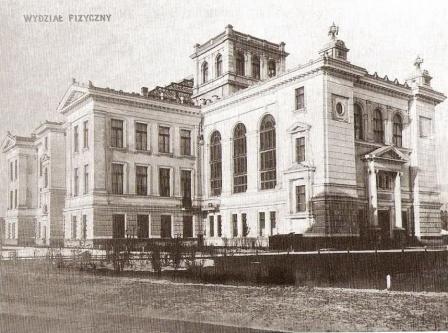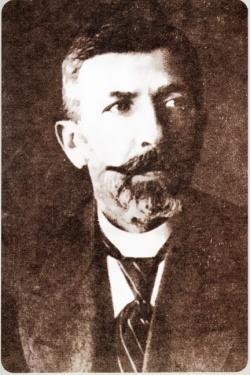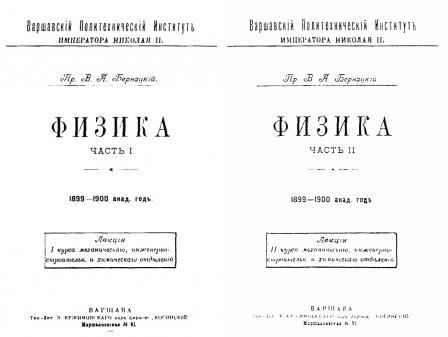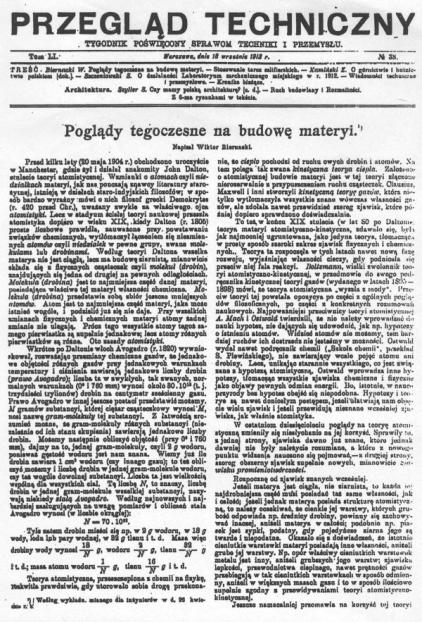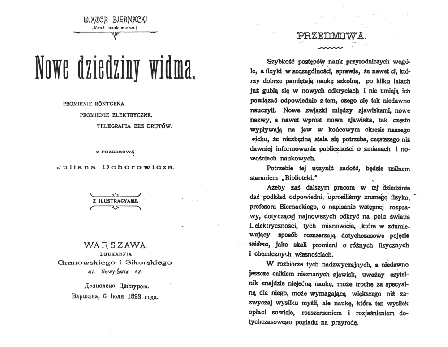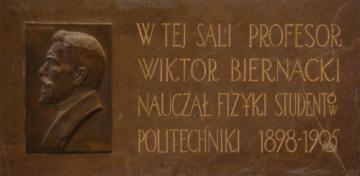Warszawskij Politechniczeskij Institut (1898-1905)
A new chapter of technical education began only in 1898, when, over 100 years ago, from the patriotic uprising of Polish society, a higher polytechnic school was established - "Warszawskij Politechniczeskij Institut"(Warsaw Polytechnic Institute), the continuation of which after several years - already as a university with a Polish name - became Politechnika Warszaska (Warsaw University of Technology).
Although during the first years the language of instruction at WPI was Russian, it was only a price to raise the technical intelligentsia for the living Polish nation. This intelligentsia, educated here and brought up here, significantly contributed to the creation of a new statehood that would soon emerge. The history of this University is a great educational and patriotic example for our work today. The most monumental building of the School - the Main Building - was crowned with an attic, on which sculptures by Pius Weloński, expressing the ideological program of the building, were allegories of Knowledge, Chemistry and Physics. (fig. 3).
The importance of teaching physics is evidenced by the fact that among the first buildings erected (1899-1901) was the Building of Physics and Electrical Engineering (Fig. 4). The physicist Wiktor Biernacki played a key role in the design and construction supervision, from the point of view of using the building for teaching and research purposes (Fig. 5). Wiktor Biernacki, responsible for physics at WPI, although he performed all the duties of a professor, remained as an associate professor due to the anti-Polish policy of the Russian authorities. The Department of Physics was organized very carefully, modern and exemplary, giving the opportunity to conduct fruitful work, both pedagogical and scientific. In addition to the demonstration section, well-stocked, the Department included a very well-organized section for student exercises with 86 tasks. The research department was well equipped with essential precision measuring instruments, auxiliaries, especially in the field of optics and electricity. A well-organized mechanical workshop completed the whole thing.
In the 1899/1900 academic year, Professor Biernacki published a monumental work (over 1500 pages) entitled "Physics part I and II" (in Russian) from lectures conducted for all students of the Faculty of Physics and Physics (Fig. 6).
He was also a creative physicist. This is evidenced by a number of his works published in Polish scientific journals, such as "Wiadomości matematyczno-physical" and "Wiadomości matematyczno-physical", in reports from meetings of the Warsaw Scientific Society, in "Przegląd Techniczny", and in magazines "Wszechświat" and " Tygodnik Ilustrowany "as well as in foreign magazines. He wrote a number of popular science works and translated books. He presented the latest achievements of contemporary physics. He wrote about the possibility of using electromagnetic waves for remote communication, he repeated the experiences of Hertz and Marconi. A year after the discovery of x-rays, he wrote an article about it. He presented the latest views on the structure of matter (Fig. 7), wrote about the special theory of relativity, about the "pressure of radiant energy", the Zeeman phenomenon. He wrote several textbooks on physics lectures and laboratory exercises. His book "New Fields of Spectrum", published in 1898, is one of the most beautiful contributions to the history of physics in Poland (Fig. 8). He translated the books by C.V. Boys "Physcis" and J. Tyndall entitled "Light".
He was a co-founder of the Warsaw Scientific Society, a member of the Society of Technical and Physical-Mathematical Skills Enthusiasts. In the article in his memoir about professor Biernacki in "Przegląd Techniczny", professor of the Warsaw University of Technology, Mieczysław Pożaryski, writes about him:
In the pre-war history of the Congress Poland, the late Wiktor Biernacki marked himself as an outstanding physicist - above all a pedagogue who educated a large group of young people, especially those studying technology. In addition to popularizing skills, he had a sense of the appropriate level of knowledge, and working a lot with young people, he often found an opportunity to teach them a deeper understanding of the phenomena of nature; he protected her from dilettantism and ignorance at the same time. He has considerable merits to Polish society. Therefore, he deserves special gratitude and lasting memory, especially where the modern generation reaps the fruits of his work.
To commemorate this great figure, a commemorative plaque was placed in the Physical Auditorium (Fig. 9) in the Building of Physics, which was built mainly in collaboration with him.
In 1905, as a result of student strikes demanding the Polish language of instruction, the university was closed.



